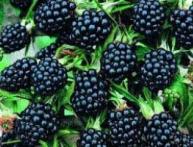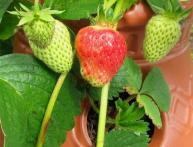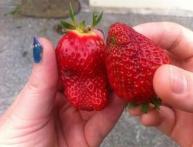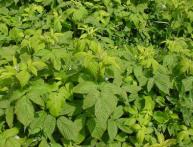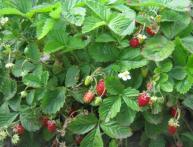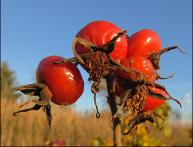Strawberries Gigantella: features, care rules
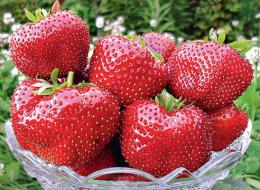
Many gardeners are interested strawberries Gigantella, since this variety stands out among the rest with its large berries and high yield. But such strawberries have some quirks and need due attention. If you follow some recommendations, you can get large juicy fruits.
Content:
- Features of Gigantella strawberries, pros and cons of the variety
- Planting and feeding Gigantella
- Some rules for caring for Gigantella
- Prevention of strawberry diseases
Features of Gigantella strawberries, pros and cons of the variety
This type of strawberry appeared for the first time in Holland. Many gardeners and gardeners were immediately interested in the huge fruits, since one berry can grow up to 100 grams. At the same time, its taste is amazing, the pulp is filled with juice, and the aroma gives off a bit of the smell of pineapple. The berries tolerate transportation well, so this variety is often grown for sale. Strawberries are colored bright red, and they are decorated with white seeds. Strawberry bushes are also large. They stretch up to half a meter. For this reason, you should think in advance about the planting scheme for this variety. You should not plant bushes close to each other. There should be 4 bushes per 1 square meter.
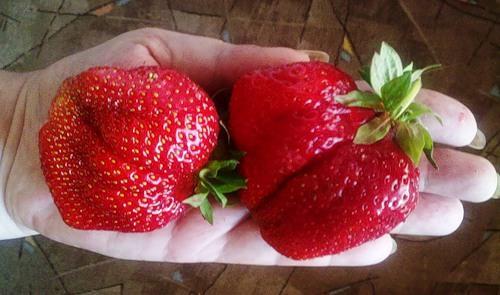
Gigantella strawberries love sunny places, this should also be considered when landing. This variety can be left on one site for 8 years. Gigantella strawberries have many benefits, which is why they have been grown frequently recently.If you compare it with other varieties, you will notice that Gigantella strawberries go away in a short time. The big advantage of the berries is their huge size and pleasant taste.
One drawback of this variety can be identified. This is because Gigantella needs frequent watering. But there is no need to flood the plant. Initially, you should check the soil; to do this, just touch it with your hand.
If it is dry, then you need to water the soil. Inflorescences form quite early on Gigantella. They may appear as early as early May, and the fruits can be harvested as early as late May or early June. We can conclude that it is possible to harvest the crop after the flowers appear after a short time. 2-3 weeks are enough for this. This can be attributed to the advantages of strawberries. The bushes grow dense and large in size. Their diameter can reach up to 60 cm. The fruits appear in a beautiful, even shape, and they are not sour in taste. By the way, Gigantella strawberries are practically not susceptible to disease when compared with other varieties.
Planting Gigantella
To begin with, you should do it right plant strawberries It needs fertile soil, and the acidity should be neutral. Therefore, you first need to select a suitable area for planting. The chosen place should be well lit by the sun. Next, the soil needs to be dug up and fertilizer applied. To do this, for 1 sq. m. you need to add a bucket of humus. You should also sprinkle some wood ash. After this, the soil will be ready for planting. We must not forget that strawberries do not sit crowded. As mentioned above, per 1 sq. m. there should be 4 bushes.
Proper feeding affects the quantity and quality of the crop. To do this, it is recommended to adhere to the following rules:
- When strawberries are only growing for the first year, then it is better not to use fertilizers that contain nitrogen. Otherwise, the fruits may become rotten. A
- Nitrogen has a positive effect on foliage growth, but this should not be allowed for a young plant. During this period, it is better to use potassium fertilizers, which are added to the ground in early spring, evenly distributed throughout the entire area.
- When the strawberries are in their second year, then you can add ammonium nitrate to the soil.
- In the third year, superphosphate is used, as well as the above fertilizers. They are connected together and brought into the ground. Initially, this procedure is done in the spring, and then after the last harvest has been harvested. Feeding must occur correctly. Together with her you need to feel good water strawberries
Some rules for caring for Gigantella
Gigantella strawberries have some quirks, but they can be classified as unpretentious plants. This variety needs some care. As soon as the snow has disappeared, the strawberry bushes should be inspected and processed. To do this, the following operations are performed:
- dry leaves are eliminated
- spraying with pesticides is done
The husks are spread out over the area Luke, which treats bushes and serves as fertilizer
When the strawberries begin to develop and grow, then fertilizers are applied. In the spring, you need to properly remove diseased and dry foliage. This is done even before the flowers begin to appear. After this, do not forget about feeding. Near the bushes you need to put pine needles or straw. This material is placed under and between the foliage. With the help of needles, moisture will be retained longer, which is necessary for the appearance of good fruits.It also fertilizes the soil and creates protection against various diseases.
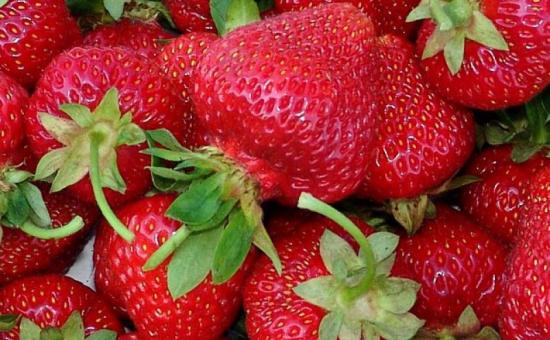
In order for strawberries to bear good fruit and the number of berries to increase, the tendrils that the plant produces must be eliminated. This must be done in a timely manner. When the first flowers appear, strawberries should be watered thoroughly. The sprinkling method is ideal for this, but the soil itself should also be moistened. If a person worried in advance and covered the strawberries with straw or pine needles, then the moisture will last much longer. To further increase the yield, the soil should be mulched, as well as constantly removing tendrils and foliage that has already rotted. But caring for Gigantella strawberries is very similar to caring for any variety of strawberry.
Prevention of strawberry diseases
To prevent strawberries from appearing illnesses, prevention should be carried out. To do this, experienced gardeners advise treating bushes with horse sorrel. First you need to prepare a suspension. It's easy to do. The sorrel is crushed and then added to a 10-liter bucket. You also need to add hot water here. The mixture should stand for 2 weeks. Next, the composition is filtered and used to spray strawberries.
In addition to the fact that this infusion will serve as a prophylactic, it also becomes a fertilizer for Gigantella. If a person decides to grow this type of strawberry, then he needs to try, and his efforts will bring him a good harvest in the form of tasty and large berries. The fruits are used to make jam or jam. But even in fresh form, these strawberries surprise with their sweet taste.
Video about how to grow Gigantella:
Interesting information about the vegetable garden




